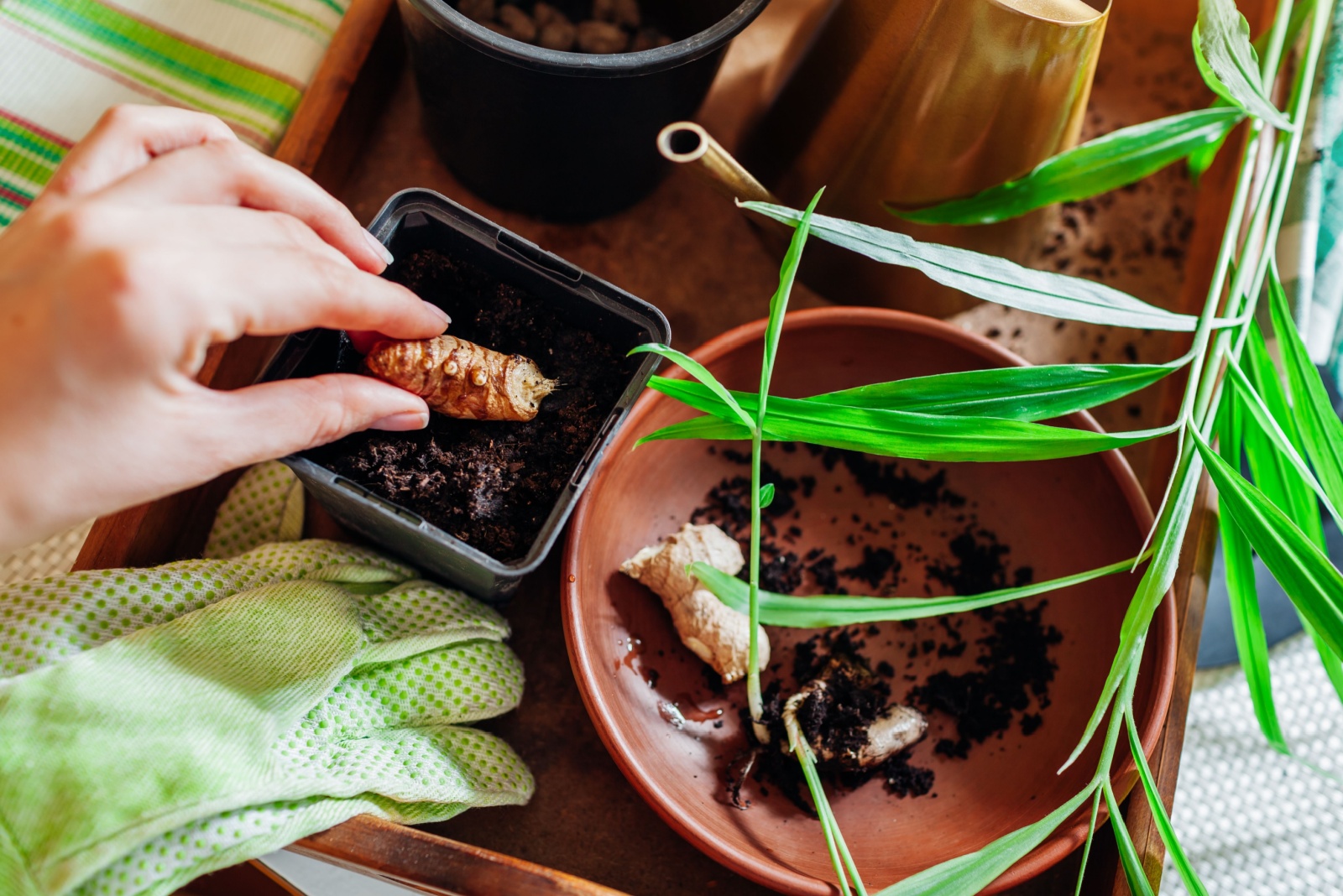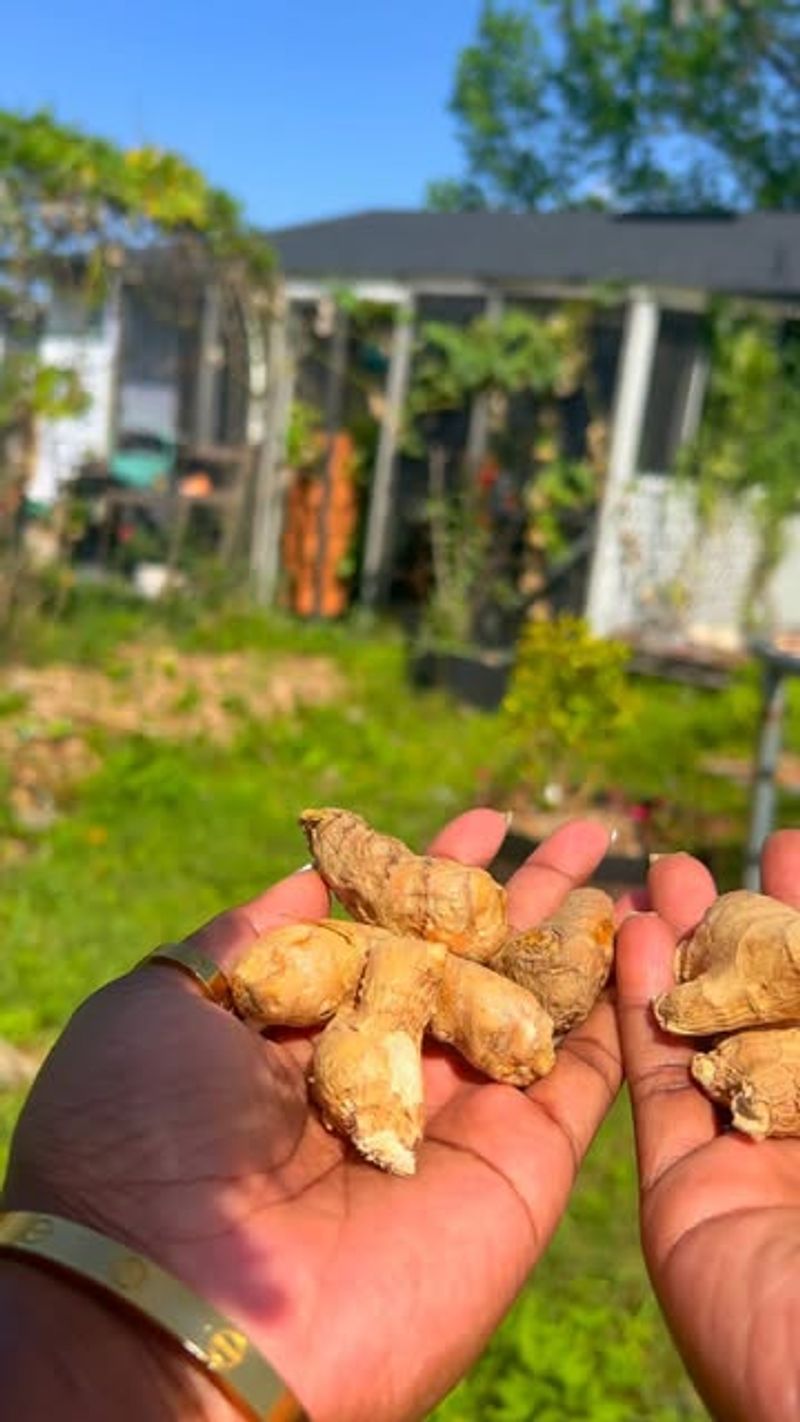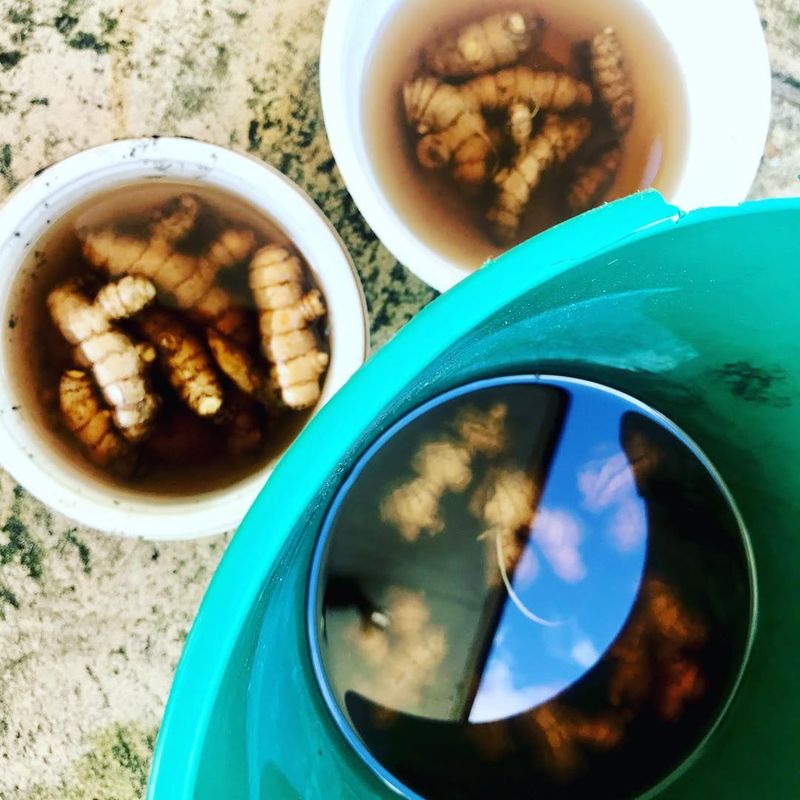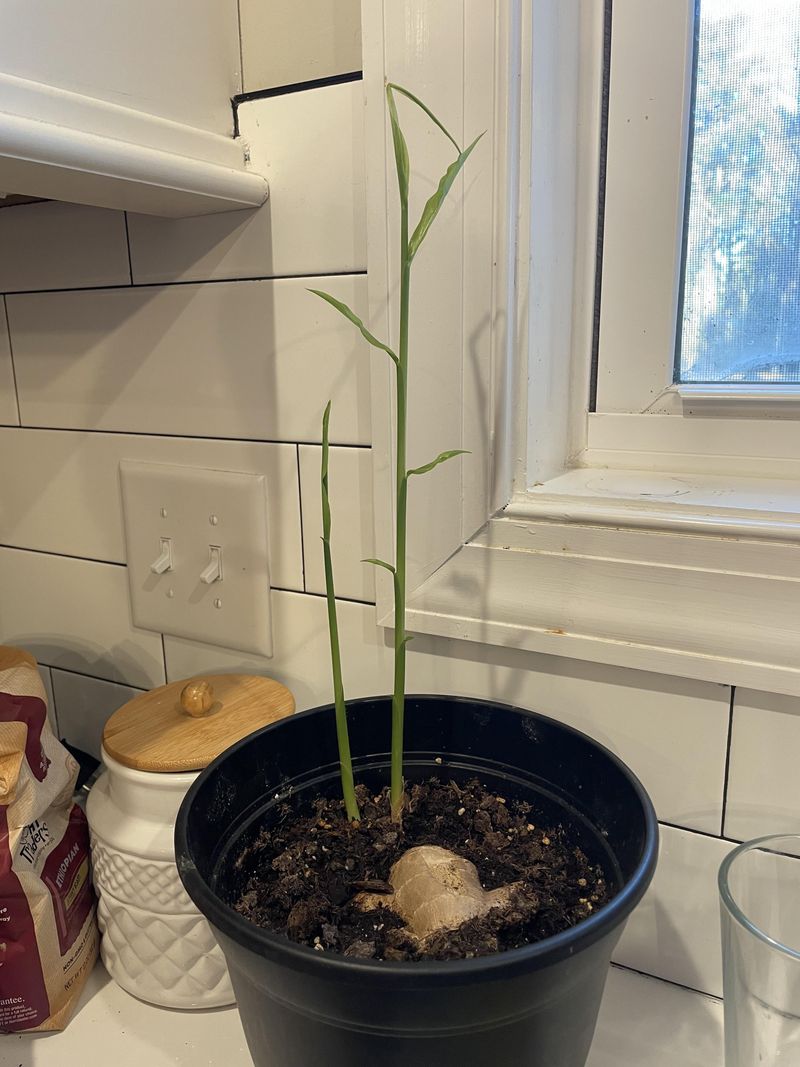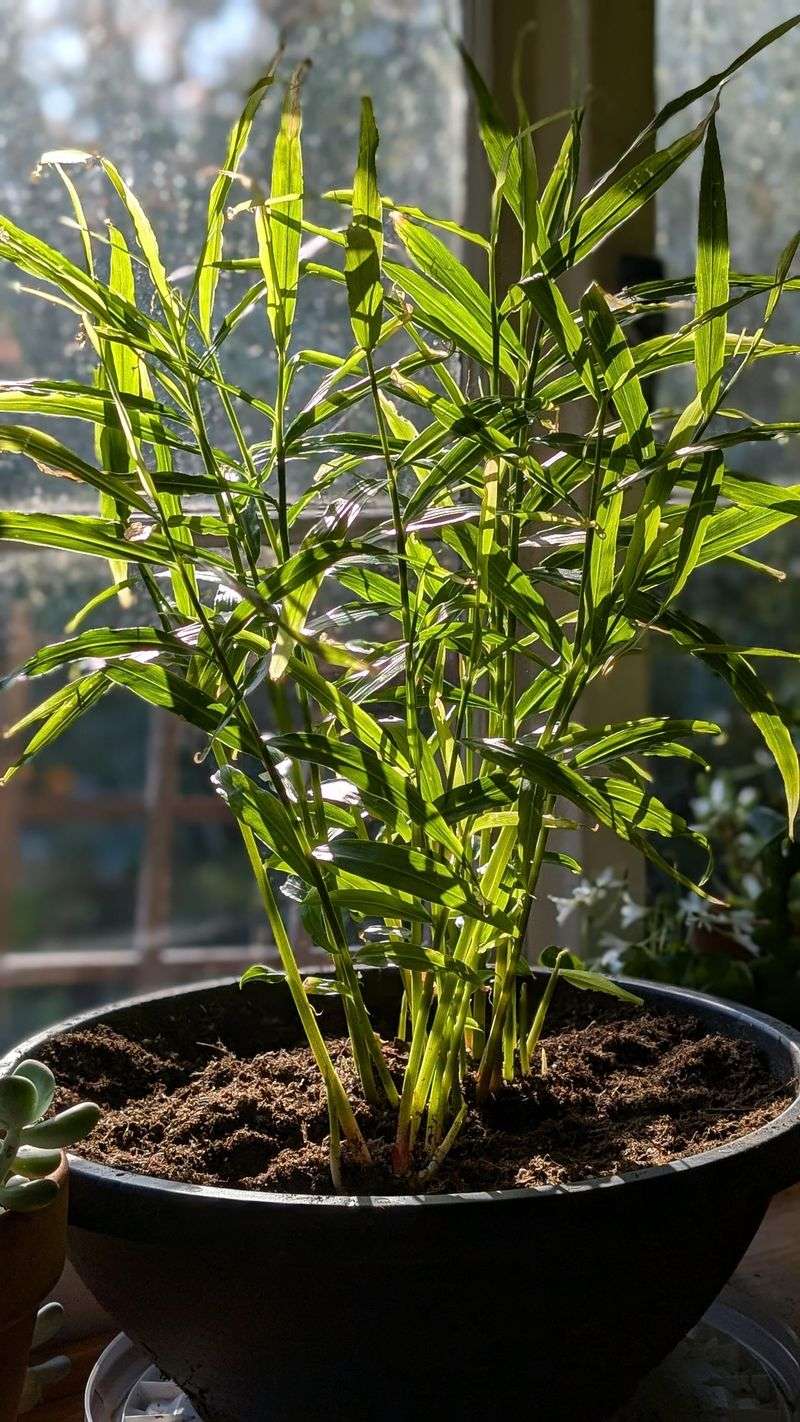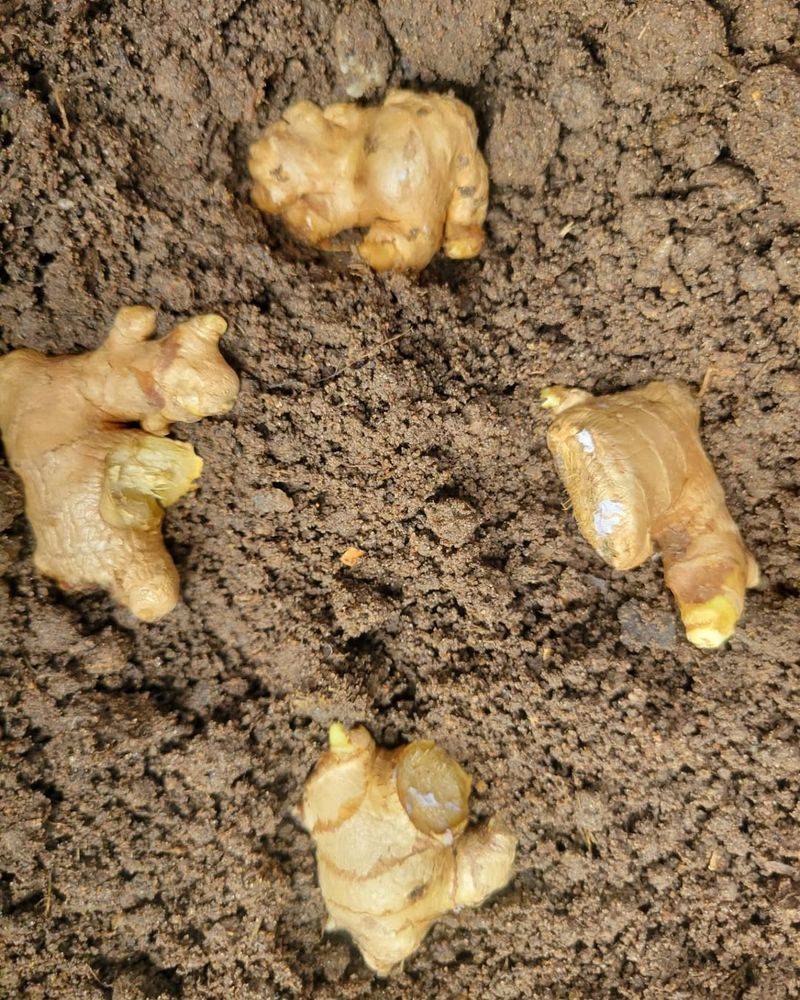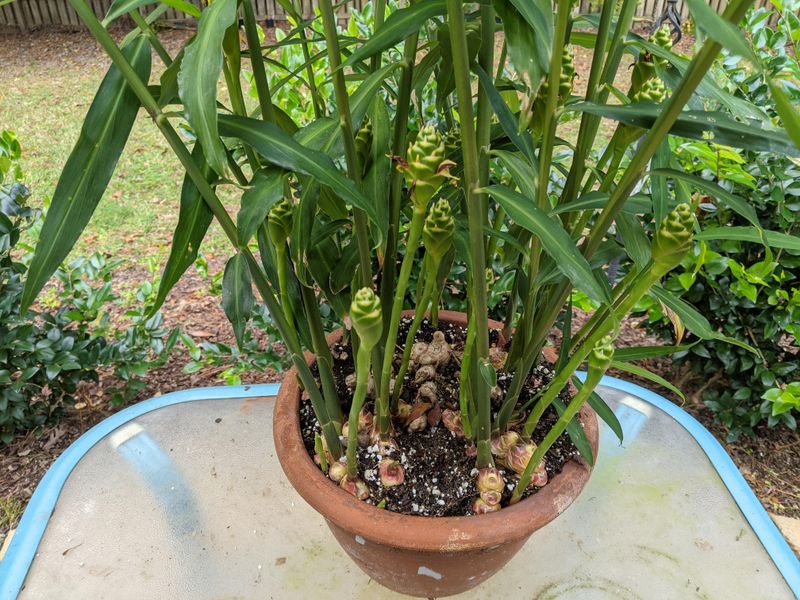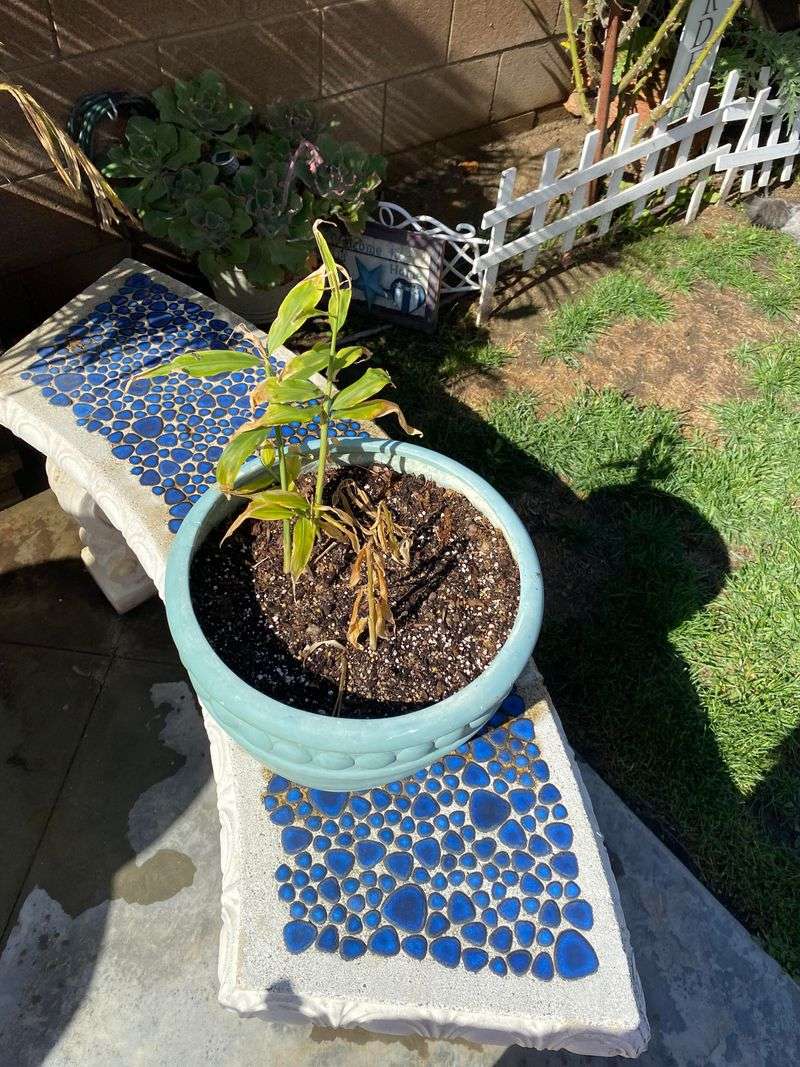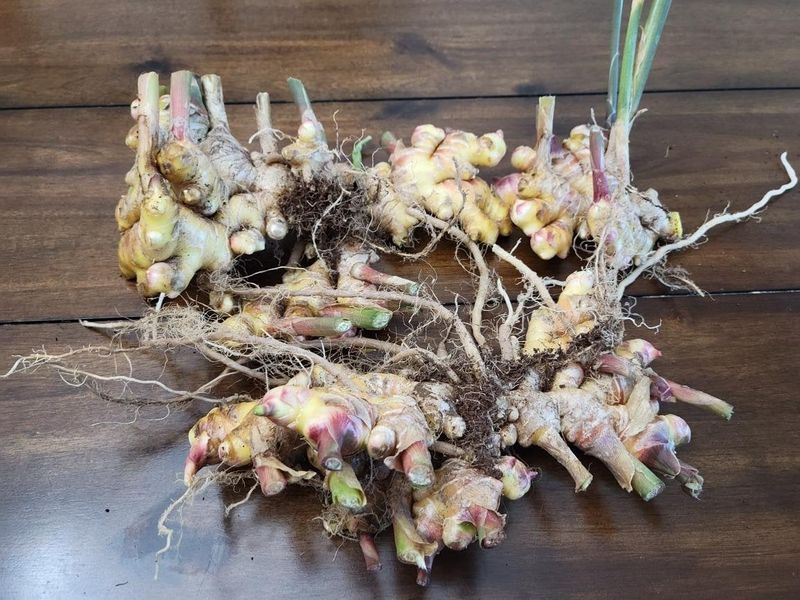There’s something really satisfying about growing your own ginger, especially when it’s cold outside and fresh herbs feel like a luxury.
I started growing ginger in pots a few winters ago, and honestly, it’s been easier than I expected.
With a little patience and the right setup, you can have fresh ginger ready to harvest even when snow is falling outside.
Pick The Right Ginger Root To Start
I always head to the grocery store or farmers market and look for ginger that has little green or pinkish buds on it.
Those buds are growth points, and they’re what will sprout into your plant.
Make sure the root feels firm and plump, not shriveled or mushy.
If it looks tired or dried out, it probably won’t grow well.
Fresh, healthy ginger makes all the difference when you’re starting out.
Soak Your Ginger Before Planting
Before I plant, I like to soak the ginger root in warm water overnight.
This wakes it up and gets it ready to grow, especially if it’s been sitting in a store for a while.
You’ll notice the skin softens a bit, and it just seems more alive the next day.
It’s a small step, but it really helps speed up sprouting. Just don’t leave it in water for more than 12 hours or it might get too soggy.
Use A Wide, Shallow Pot
Ginger roots grow outward more than they grow down, so a wide pot works way better than a deep one.
I use containers that are at least 12 inches across and about 8 inches deep.
Make sure there are drainage holes at the bottom so the soil doesn’t get waterlogged.
Too much standing water can cause the roots to rot, and nobody wants that.
A shallow, wide pot gives the ginger plenty of room to spread out comfortably.
Choose Loose, Well-Draining Soil
Ginger loves soil that drains well and doesn’t hold too much moisture.
I mix regular potting soil with a bit of compost and perlite to keep things light and fluffy.
Heavy, clay-like soil will just suffocate the roots and slow down growth.
You want the water to flow through easily while still holding some nutrients.
Think of it like creating a cozy, breathable bed for your ginger to settle into and thrive.
Plant With Buds Facing Up
When you place the ginger in the soil, make sure those little growth buds are pointing upward.
I usually plant the root about 2 inches deep and cover it lightly with soil.
If you bury it too deep, it’ll take forever to sprout. If it’s too shallow, it might dry out.
Finding that sweet spot makes a big difference.
Within a few weeks, you should start seeing green shoots poking through the surface.
Keep It Warm And Humid
Ginger is a tropical plant, so it loves warmth and a bit of humidity.
I keep my pots near a sunny window, but not in direct harsh sunlight, and try to maintain temperatures around 70 to 75 degrees.
If your home is dry, mist the soil lightly every few days or place a tray of water nearby.
Creating that warm, slightly humid environment helps the ginger feel right at home, even in the middle of winter.
Water Lightly And Consistently
Ginger doesn’t like to sit in soggy soil, but it also doesn’t want to dry out completely.
I water mine lightly every few days, just enough to keep the soil moist but not soaked.
Stick your finger about an inch into the soil. If it feels dry, it’s time to water.
If it’s still damp, wait a day or two.
Consistent, gentle watering keeps the roots happy and prevents rot or stress from drying out too much.
Be Patient And Harvest Carefully
Ginger takes a few months to mature, so don’t expect instant results.
I usually wait at least three to four months before I start harvesting any pieces.
When you’re ready, gently dig around the edges and snip off what you need, leaving the rest to keep growing.
The plant will continue producing as long as you care for it.
Patience really pays off when you finally get to use your own homegrown ginger in cooking.

